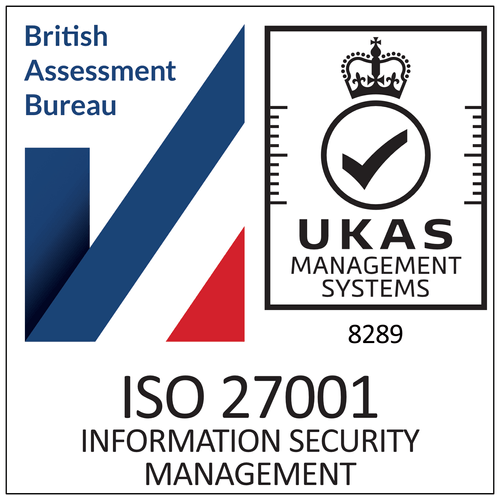An LMS comes with plenty of important business values. Some of which may be overlooked by decision makers outside of your business function. Depending on areas of use, a learning management system can have a dramatic impact on your training programs' effectiveness. Some may be direct, others indirect. In this article, we list factors to include when calculating the true ROI (return on investment) of your LMS.
The aim is to give you the right resources to prove the value of your LMS and protect your budget.
- General
- Onboarding
- Internal training
- External training
1. General
Optimize and scale your training initiatives. An LMS (Learning Management System) can help you boost your KPIs and generate benefits that apply to all types of training.
Optimize time with self-paced learning
With self-paced online courses, your learners can fit training into their schedules, as and when they can. Instead of setting aside large blocks of time, they can use quiet time, breaks, or commutes to complete training. As a result, you optimize your learners' time, bandwidth, and productivity.
"Instead of spending several hours on training, our employees can learn something new within just a few minutes."
- Julia Florén, Learning & Development Manager, Ants Tech Recruiters (Learnster customer)
Cut travel costs by lowering the barriers to participation
Instead of having trainers and learners traveling far and wide, they can complete training online from anywhere. Sharing knowledge through virtual classrooms or self-paced e-learning cuts associated travel costs.
Scale training by removing recurring sessions
An LMS can transform physical classroom training into scalable, on-demand online courses. The non-instructor-led format removes the need for (live) recurring training sessions (and all the preparation that goes into it!). Instead, trainers save time and resources by preparing training just once (with the exception for potential course updates).
More reach for the buck - reduce the cost per participant
Online training requires little or no logistics. With zero need for travel or on-site facilities, the only thing your learner needs is a connected device. This boosts the capacity rate and the potential reach of your training program. In effect, the cost per participant drops dramatically.
Shorten time to proficiency with increased course completion rates
If your course offering is compelling and easy to access, then more learners will complete training. As simple as that. Course completion is essential for meeting your learning objectives and reaching sufficient skill levels. A modern LMS can help you build, structure, and distribute a more attractive course offering.
"Our courses now rank higher. We have seen a rise in usage of learning resources."
- Julia Florén, Learning & Development Manager, Ants Tech Recruiters (Learnster customer)
Reduce dependency on external (and costly!) expertise and course production resources
External expertise and resources quickly add up to your course production bill. Producing courses internally, you can cut out middlemen and reduce production hours. Your organization will become less dependent on external specialists, agencies, project managers, script writers, and producers.
An LMS with a built-in, user-friendly authoring tool enables internal course production. Employees can contribute to, or take entire ownership of, training programs within their area of expertise. Meanwhile, you leverage and scale internal knowledge.
Keep admin to a minimum - free up valuable time and resources
An LMS with automation rules reduces time and resources spent on admin. Pre-set workflows and learning journeys will do the job for you while minimizing the risk of human error.
"Our Learning & Development Coordinator has reduced the time spent on admin by 50%. The remaining time is spent on other value-adding activities."
- Julia Florén, Learning & Development Manager, Ants Tech Recruiters (Learnster customer)
2. Onboarding
Boost productivity and retention of new employees. With an LMS, organizations can boost a number of preboarding and onboarding-related KPIs.
Reduce time to contribution (time to productivity) with efficient preboarding and onboarding
A smooth and productive start helps new employees hit the ground running. An LMS can make preboarding and onboarding processes more streamlined, accessible and personalized.
Introduce your new employees to the company - before their first day at the workplace. Share company information and trigger automated workflows of role-specific training. Easy access to learning materials streamlines and simplifies the process. Learning at the point of need helps the new employee work and learn smarter and more confidently. In other words, an efficient onboarding process reduces the time to contribution for new employees.
"Upon onboarding completion, new employees perform beyond their managers’ expectations."
- Johan Westberg, Nordic Culture and People Manager, SATS (Learnster customer)
Increase new employee retention by setting the right expectations early
Set the right expectations from the start - and avoid losing new hires. Clear preboarding and onboarding give new employees an understanding of the role, responsibilities and what is expected of them.
" 93% of new employees have a clear understanding of what is expected of them by the end of the onboarding process. This is a key factor for happy and productive employees who stay longer."
- Johan Westberg, Nordic Culture and People Manager, SATS (Learnster customer)
Improve e-NPS (employee net promoter score) by providing a great first experience
First impressions last. Employees who have had a positive first impression and successful onboarding are more likely to give the company a high eNPS.
"New employees give SATS an e-NPS of 52 after their first quarter. Our onboarding is a strong contributor, as 96% of the employees say they have received a positive first impression of the company."
- Johan Westberg, Nordic Culture & People Manager, SATS (Learnster customer)
Boost employer branding with early and frequent touchpoints in the recruitment process
Secure your dream candidate early. Put your best foot forward and introduce your company already at the offer stage. Continue with frequent touchpoints throughout the recruitment process. Building rapport early boosts the chances of signing your dream talent.
Modern LMSs can integrate with recruitment platforms (e.g. Teamtailor). Set up and trigger automated interactions at selected stages of your recruitment process to keep engagement high.
3. Internal training
Internal training refers to the training of employees and other internal stakeholders. An LMS can improve the quality and effectiveness of your training programs. It can also create opportunities for leveraging and scaling internal knowledge.
Reduce the time for information searching and boost productivity
Employees spend almost 20% of their time searching for information (McKinsey). Accessible learning resources reduce the time spent searching for the right information. An LMS that enables learning at the point of need (moment/JIT learning) helps your employees become more productive in the day-to-day work.
Improve eNPS (employee net promoter score) by providing learning opportunities
There is a strong link between opportunities for skills development and employee satisfaction. Employees who experience purpose and growth opportunities rate their employers higher. An LMS provides tools for building an academy of attractive learning resources that promote career development. Personalized learning journeys make training more relevant.
Drive employee engagement with opportunities for development
Learning opportunities in the workplace boost motivation. When work feels meaningful, employee engagement levels rise. A modern LMS improves the quality and effectiveness of your learning initiatives. The platform lets employees source and request learning resources based on role, skill gap, career goal or area of interest. Self-initiated learning opportunities put the employee in the driver’s seat. In other words, they are given more ownership of their own development.
"Since we started working with Learnster, our employees have started to take more ownership of their own development. We have noticed a curiosity and drive to learn new skills."
- Mikaela Ljunggren, Learning & Development Specialist, PE Accounting (Learnster customer)
Reduce staff turnover with opportunities for career development
Employees are as likely to leave for development opportunities as they are for higher pay. In 2023, 3 out of 4 employees hunt for career opportunities outside their organization (Udemy Business, 2023 Workplace Learning Trends Report). 94% of people are willing to stay longer at their companies if provided skills development (LinkedIn Learning Report).
An LMS can scale and optimize your initiatives for learning and development. Providing better opportunities for career development, your organization becomes a more attractive workplace. In effect, this will help your company attract, develop and retain talent.
"The opportunity to grow and develop at the workplace encourages our employees to stay longer."
- Julia Florén, Learning & Development Manager, Ants Tech Recruiters (Learnster customer)
"We have lowered our staff turnover rate. Fewer employees resign within their first year, which is a result of improved onboarding and internal structure. The number of sick days has also dropped."
- Mikaela Ljunggren, Learning & Development Specialist, PE Accounting (Learnster customer)
Scaling internal knowledge reduces dependency on individual employees
Your subject matter experts are your organization's most valuable asset. But they are also human and may come and go. By capturing and scaling internal expertise, your organization becomes less dependent on individual employees.
A user-friendly LMS makes it possible to involve the entire organization in the production of learning materials. By letting subject matter experts contribute to training, you can leverage and scale internal knowledge (and become less dependent on individual employees!).
Improve business agility with upskilling
Organizations prioritizing learning and innovation are more agile. Developing skills for both current and emerging roles, employees become better equipped to face both current and future challenges. Skills development practices the ability to adopt new ideas and work methods, such as those posed by an evolving workplace. Investing in an LMS means investing in your skills capital, which is the catalyst for change in your organization.
4. External training
External training refers to training of customers, partners and other external stakeholders. The main purpose is usually to increase the understanding and value of your products or services. An LMS can improve the effectiveness and commercial benefits of your training initiatives.
Customer onboarding shortens time to adoption (implementation phase)
Interactive and engaged customers are vital for a long-term business relationship. A high level of usage drives both renewals and future upselling opportunities. Customer onboarding helps your customers get started and reduces the time it takes to adopt your products or services on a group level. An LMS can help you provide a positive first experience and build knowledge that drives usage among your customers.
Reduce CAC (customer acquisition cost) with effective customer training
An efficient customer adoption/implementation phase takes up less of your customer support function. Ccustomer training helps build an understanding of your solutions and how to use them. With an LMS, your customer success function can deliver clear, efficient and accessible learning materials that speed up onboarding and reduce the need of 1:1 support.
Customer knowledge improves your NPS (net promoter score)
Understanding the value of your products or services is a prerequisite for recommending them to others. Customer training boosts that knowledge, while helpful information makes your customers feel cared for. An LMS can help you share valuable information and and communicate values in an personalized and engaging way.
Minimize churn risk by maximizing interaction
Customers who interact with and see value in your solutions are less likely to leave you. Providing training and leveraging touchpoints promote interaction across your customer's organization. The goal is to make your products or services an integral part of your customers' everyday. Using an LMS can help you secure sufficient knowledge levels and deliver timely interactions at important stages of the customer lifecycle.
Fewer support tickets with self-service learning
Basic product knowledge combined with accessible bite-sized learning resources can reduce the need for 1:1 support. Learning at the point of need also removes potential friction and frustration among your customers. Your LMS can become the one-stop-shop for self-service learning, including resources such as manuals, guides and FAQs.
Better knowledge, better performance from reseller network
A knowledgeable network of partners, resellers, and distributors perform better. Being up to date with your brand and portfolio of products and services, they become better at selling your solutions and representing your company. An LMS helps you deliver and follow up on introductions, certification courses, and important information about product updates, etc.




